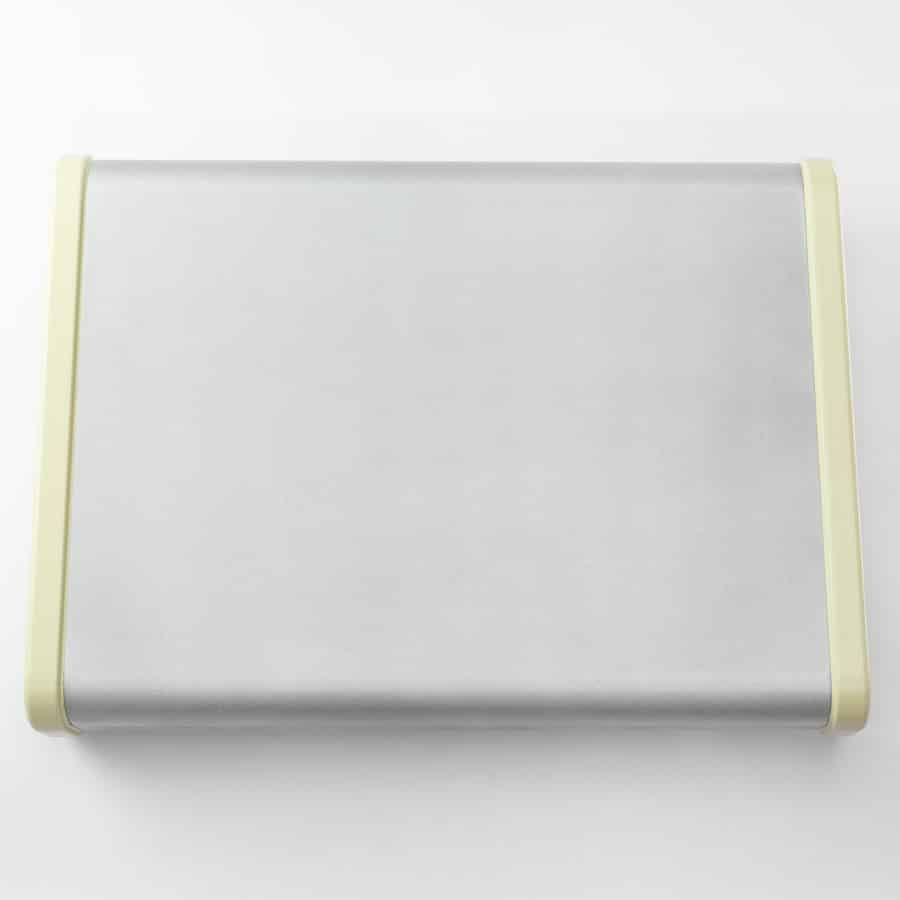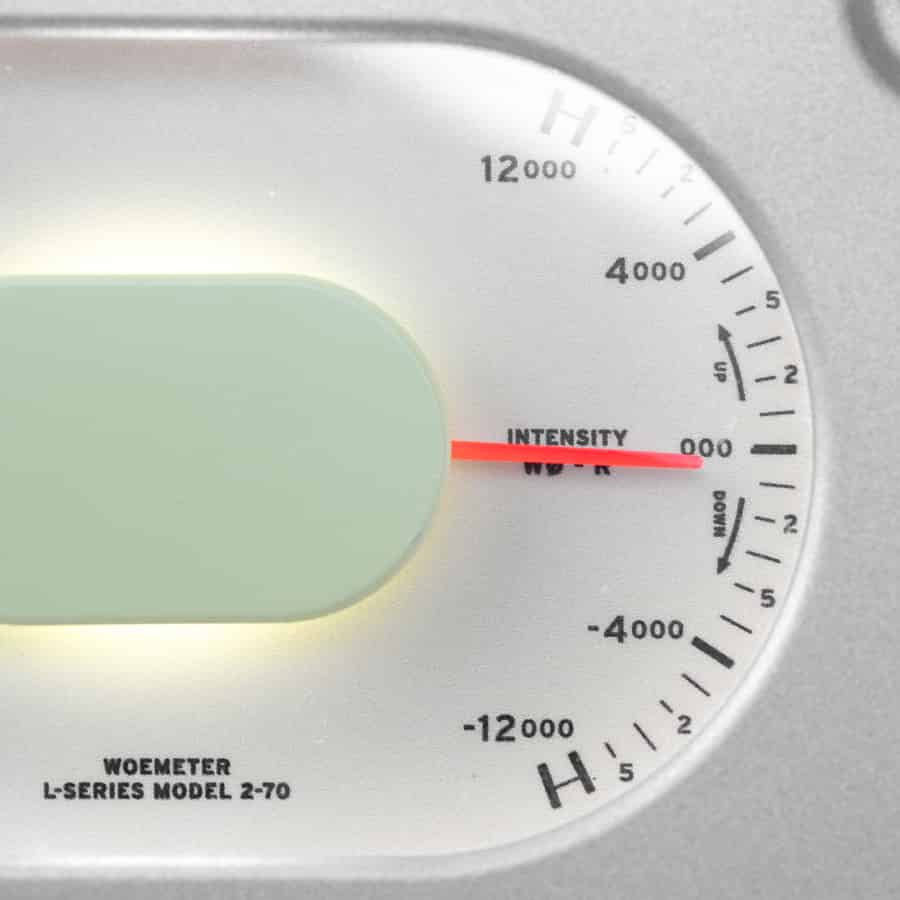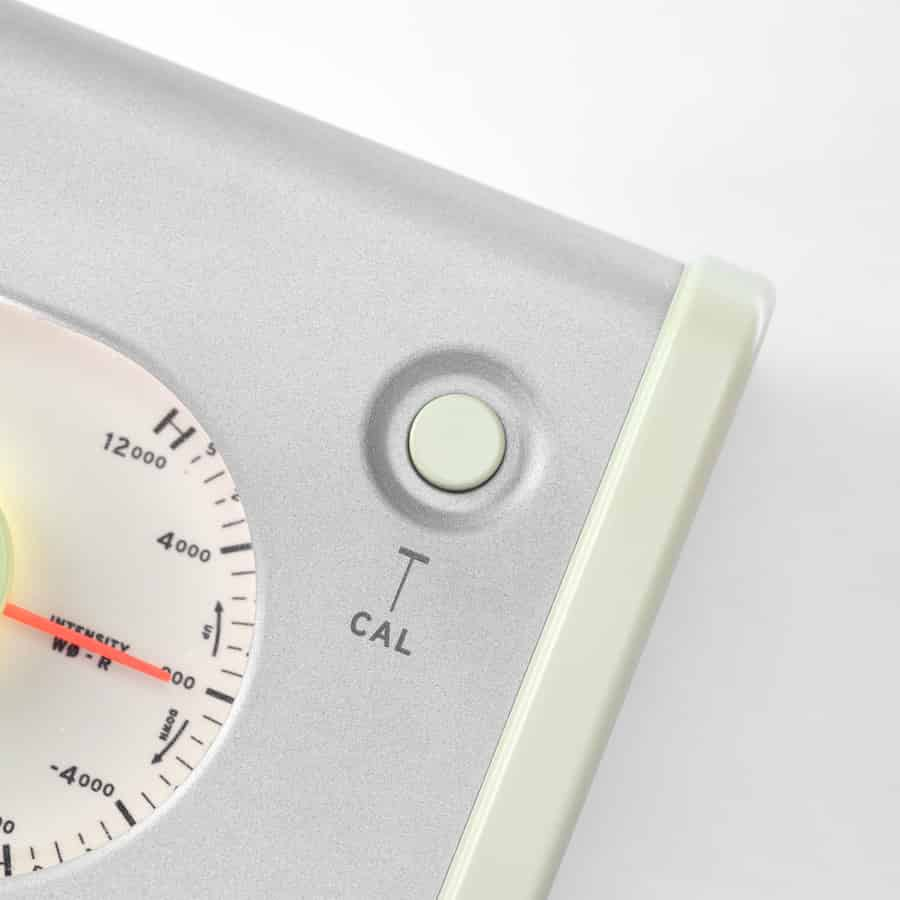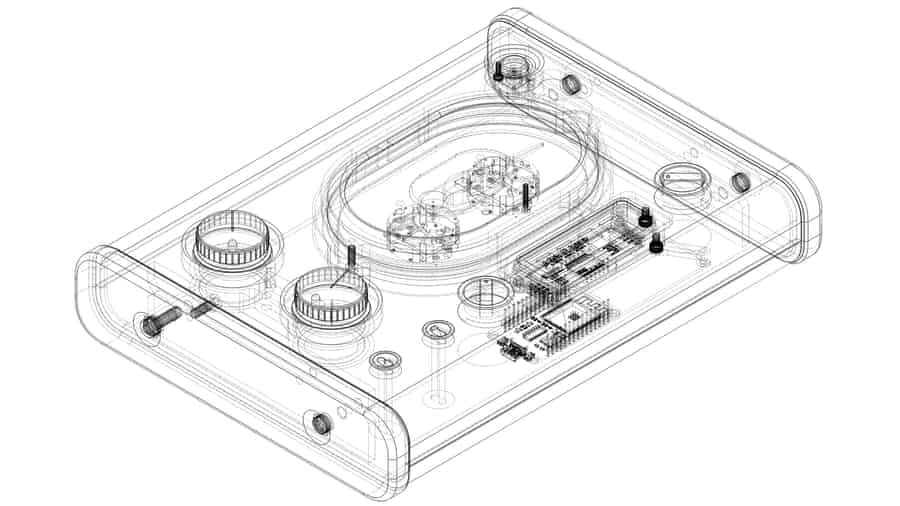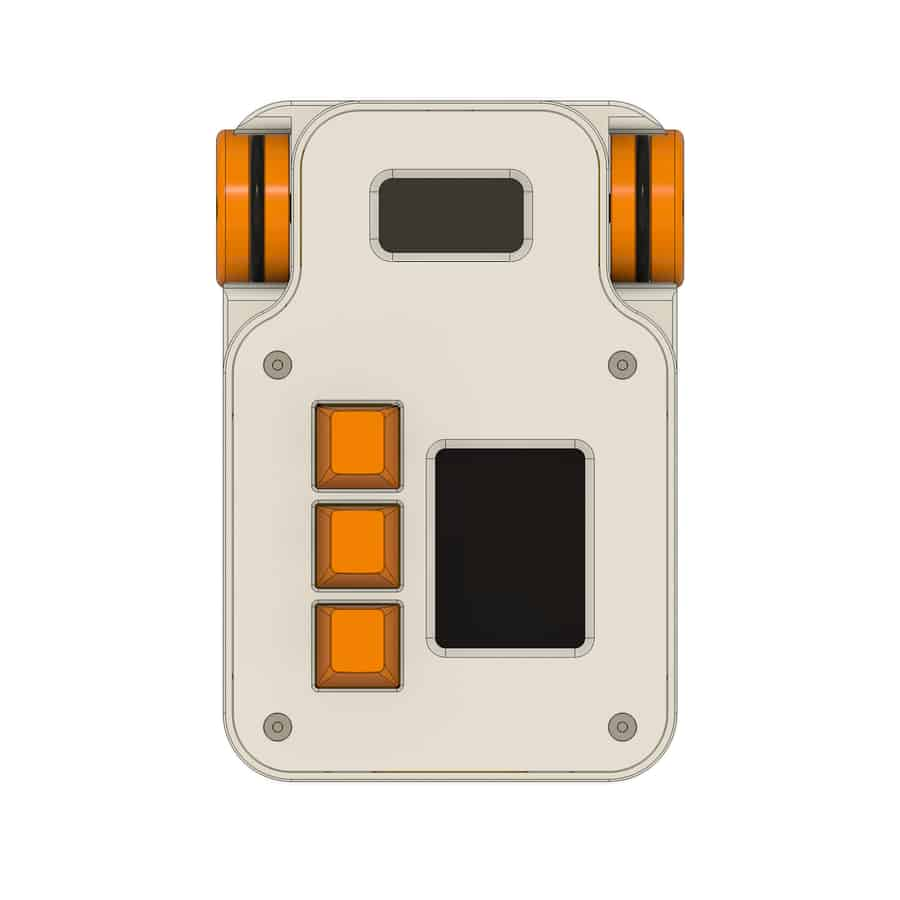Lumon Industries WoeMeter
Project: Severance Season 2
Requirements: The story needed we build a machine that measured Woe in a person, one of the Kier Eagan's "Four Tempers": Woe, Frolic, Dread, and Malice. Having been shown only concept renders and only having six weeks until the shoot schedule of the episode we had to streamline the design and feedback process.
Materials: Aluminum, 3D printed PETG, powder coated paint, ESP-32 microcontroller, custom designed PCB, small and quiet servo motors, a seven segment display and various repurposed knobs and switches form an old Nagra audio tape recorder.
Process: The fabrication began with the CAD design and 3D modeling of the Woe Machine and all of it electronic components. The main housing body was milled out of aluminum and the side caps of solid titanium.
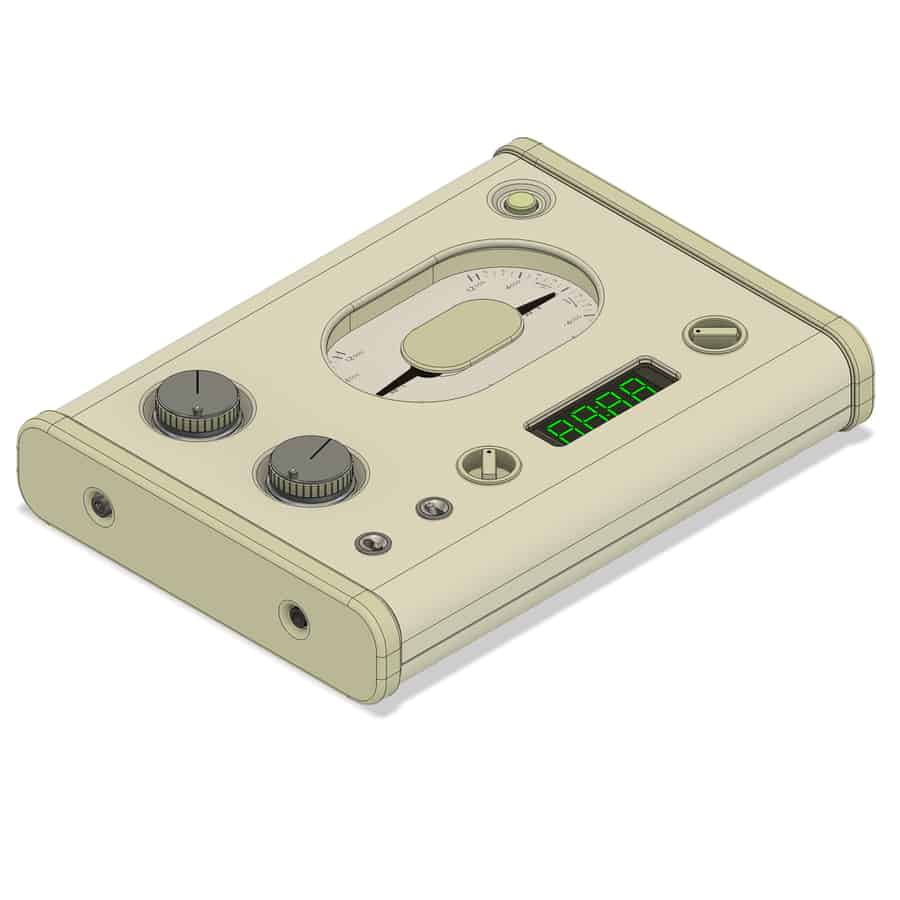
Severance Season 2 Episode 7 — 'Chikhai Bardo'




The Design Process
Severance is renowned for its distinctive production design, and we were tasked with bringing the WoeMeter to life—from early sketches to a fully functional, screen-ready prop.
The process began with translating initial design sketches from the props department
Prop master: Catherine Miller
Production designer: Jeremy Hindle
Concept art: Eric Fehlberg
sketches into CAD, meticulously recreating each part before parametrically designing the entire machine for precision and flexibility. A key element of the aesthetic was the incorporation of authentic hardware, including knobs and dials harvested from a vintage Nagra IV-D recorder from the early ’90s, which aligned perfectly with the creative team’s vision.
Throughout development, we maintained continuous collaboration with the production team, refining details as designs evolved, materials were tested, and color choices were fine-tuned. While the early stages required extensive upfront work, our parametric approach allowed for rapid iteration—ensuring that any design tweaks could be implemented instantly and approved on the spot.
By keeping an open and agile workflow, we ensured that every element of the Woe Machine seamlessly integrated into the unique visual world of Severance while remaining practical and functional for on-set use.
Concept Art
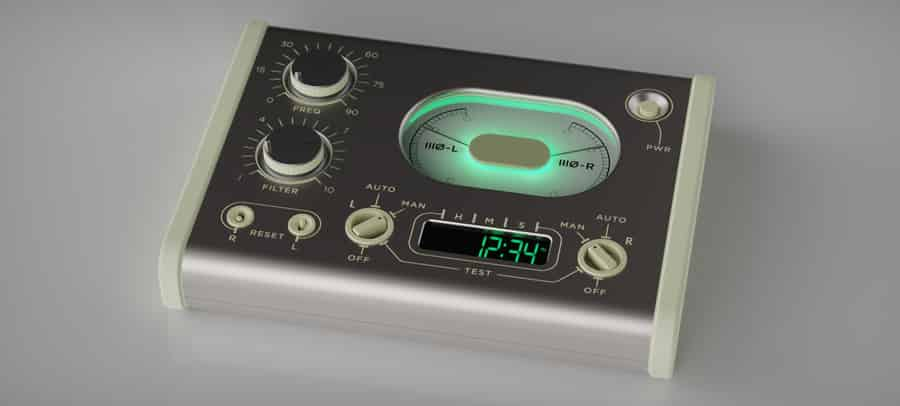
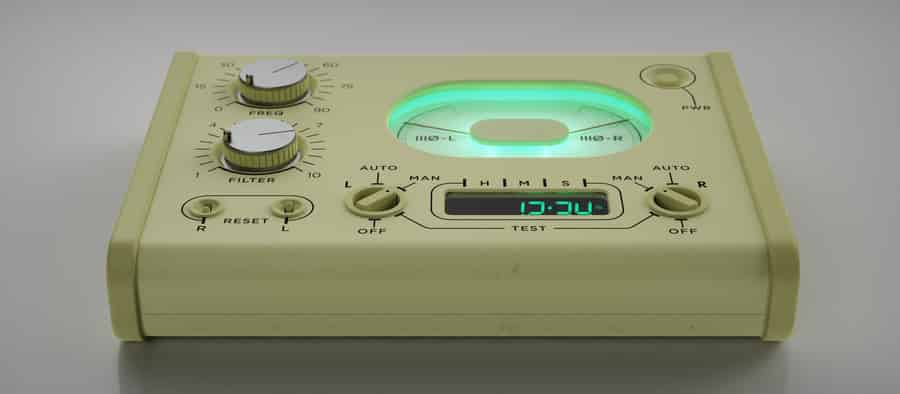

Material and Color Options

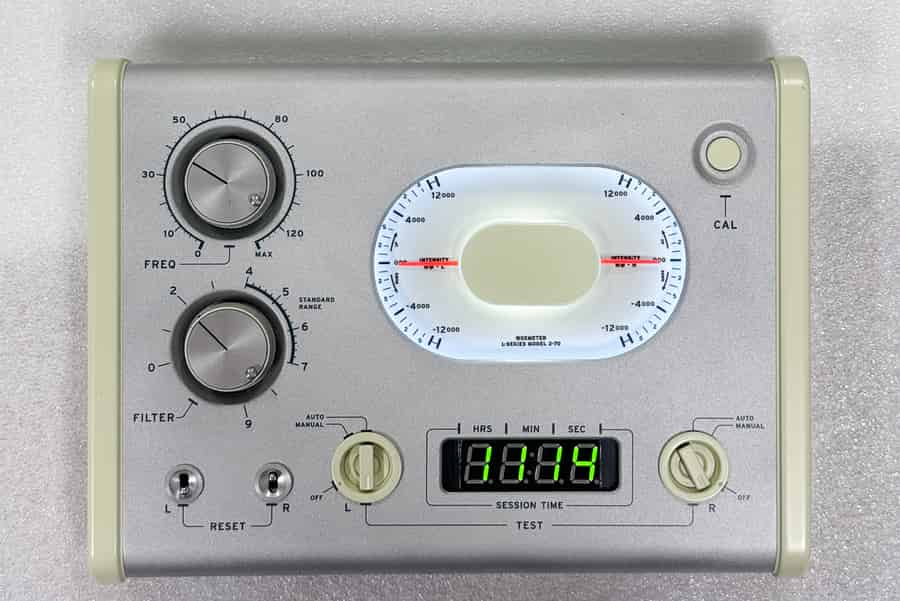
Mechanical and Electronics
The Woe Machine was engineered for seamless on-set use, combining wireless control, multiple operational modes, and fully functional components to ensure both practicality and authenticity.
Core Features & Functionality:
• Wireless On-Set Control – Allowed natural actor interaction while eliminating post-production wire removal.
• Multiple Woe Reading Modes – Custom-programmed motion options for the needles, allowing varied and precise movement for different scenes
• Repurposed Nagra Knobs & Switches – To ground the device in a tangible, vintage aesthetic, we salvaged original knobs and switches from a 1990s Nagra IV-D recorder, seamlessly integrating them into our design. These components not only provided an authentic look and feel but also remained fully functional, with:
• A power switch for system activation.
• A reading on/off switch to engage or disable the Woe display.
• A manual override switch to cycle through needle positions if wireless control failed.
• Dual Independent Needle Control – Two quiet Automotive Gauge Stepper Motors operated the needles separately for precise movement.
• 7-Segment Display & LEDs – A vintage-style digital clock display and LED indicators provided the needed aesthetic.
• Custom PCB with ESP32 Microcontroller – A compact, efficient circuit board powered all operations.
• Over-the-Air Firmware Updates – Enabled rapid on-set adjustments without disassembly.
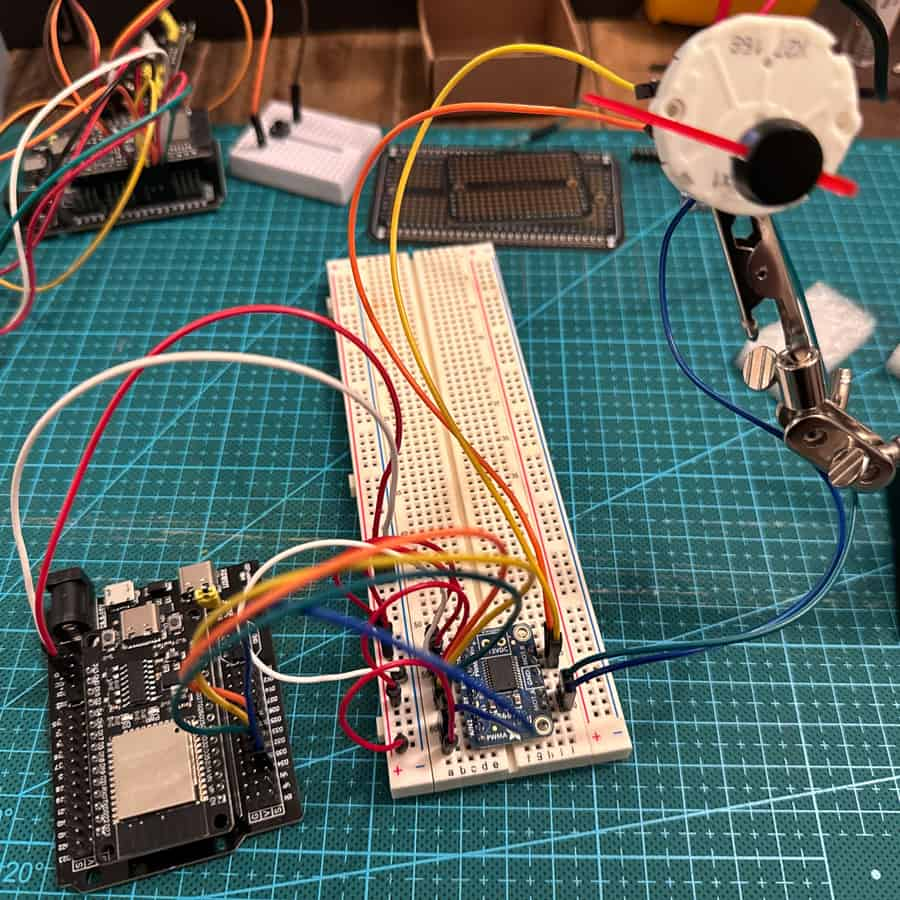
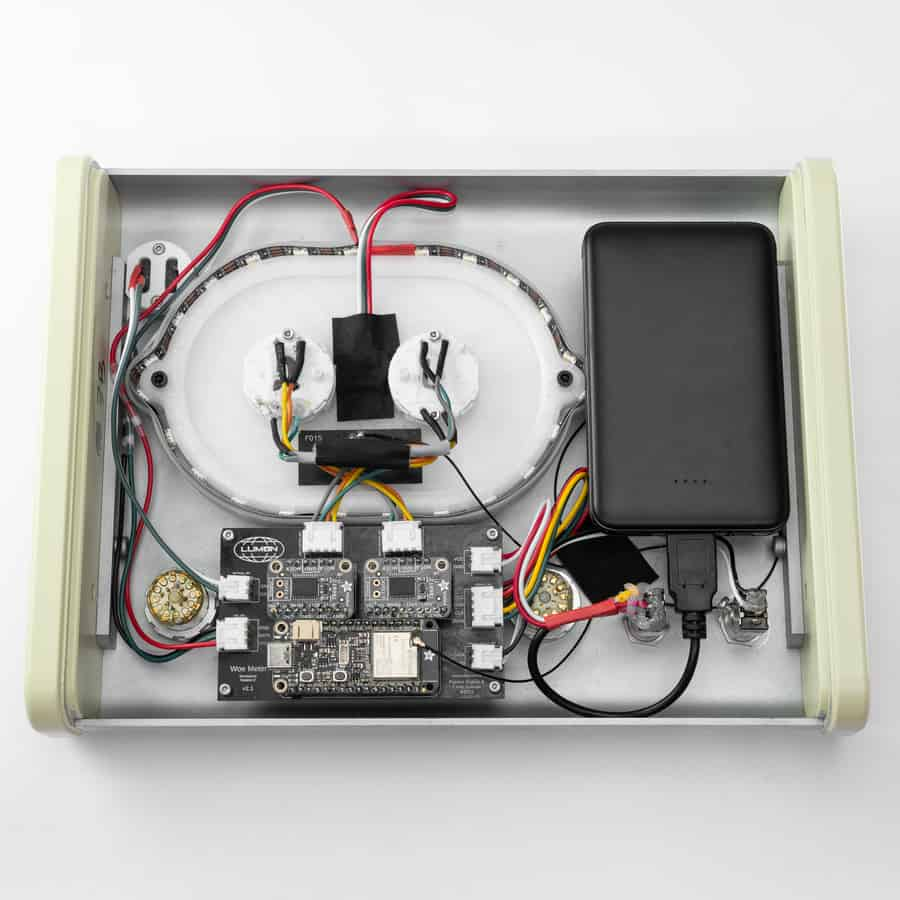
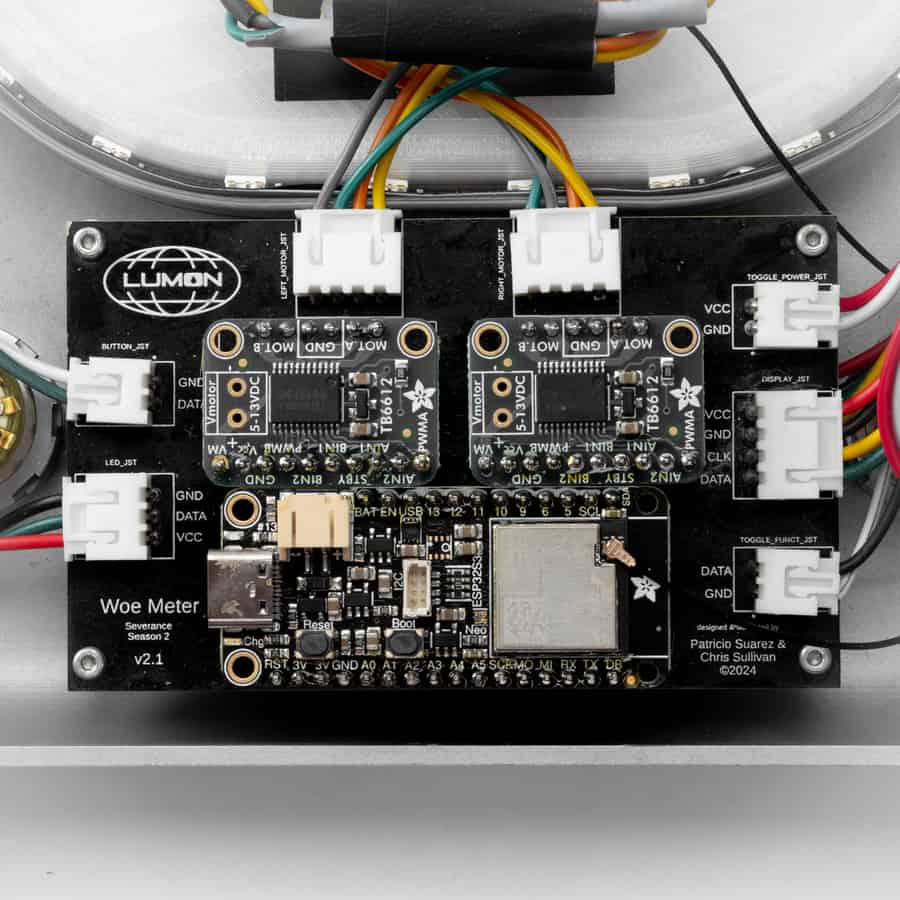
Assembly and Finishing
Production design requested a seamless exterior, meaning no visible access doors. To achieve this, we engineered a four-screw assembly system, allowing the bottom panel to detach easily for battery replacement and servicing while maintaining a clean, uninterrupted form.
Every knob and switch was not only functional but also intuitively placed, aligning with the visual cues on the top case to ensure that actors could interact with the device naturally.
The original version of the Woe Machine featured a clear anodized aluminum finish, showcasing the precision of its construction. However, shortly before delivery, the Episode Director and series Cinematographer Jessica Lee Gagné, requested a uniform look, leading us to powder coat the entire shell and sides in a specific Green to match the production’s aesthetic.
While the final screen version reflects this adjustment, we’ve chosen to showcase the clear anodized version here, as it best highlights the craftsmanship and raw material beauty of the design.

